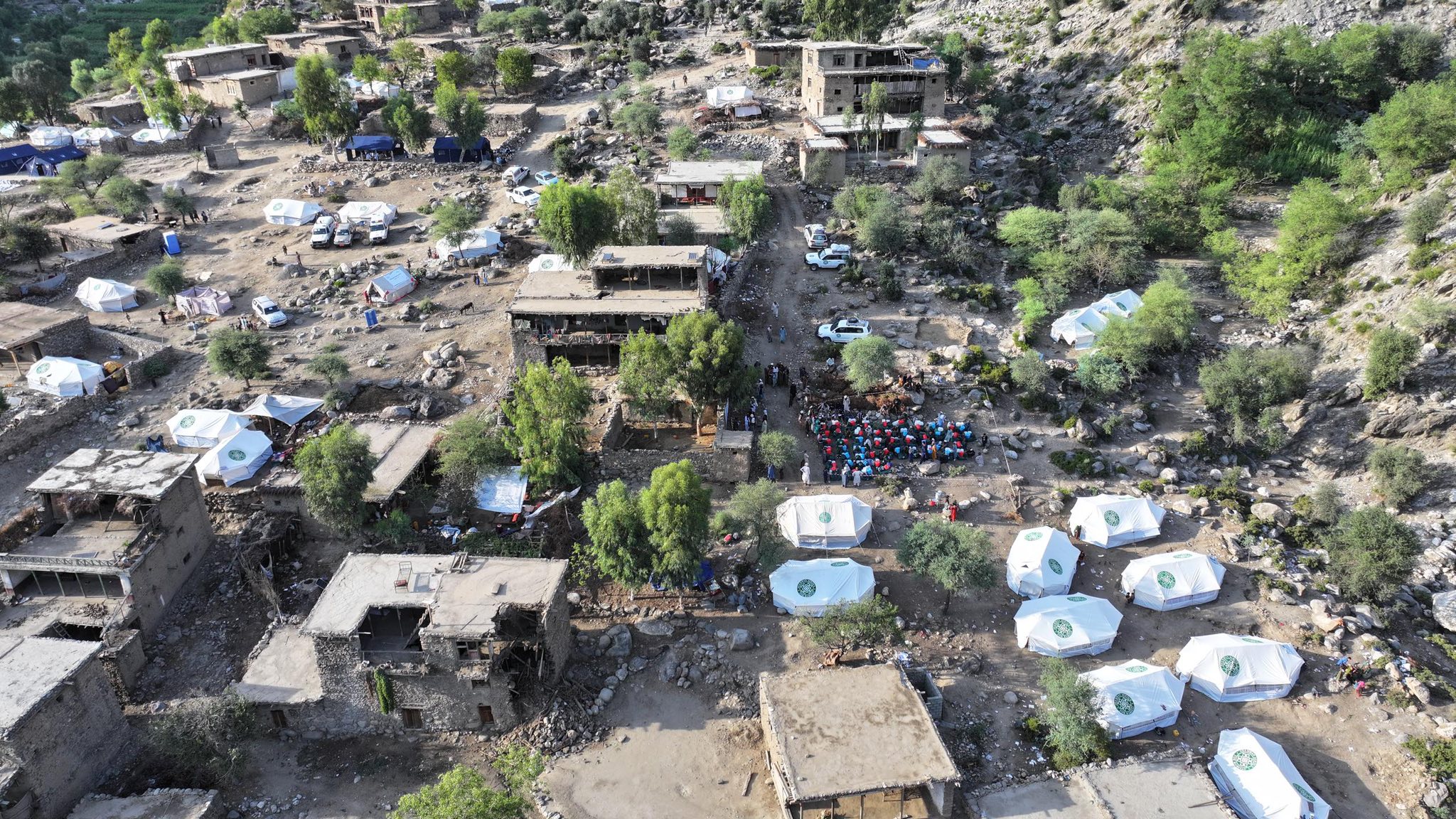What we’re watching: Weekly disaster update, September 8

We know all too well that disaster can strike anytime, anywhere in the world. Some disasters make headlines; others do not. Here at the Center for Disaster Philanthropy (CDP), we monitor the status of disasters worldwide and compile a list of the ones we’re tracking weekly, along with relevant disaster-related media coverage.
Here’s what we’re watching for the week of Sept. 8, 2025.
New or Emerging Disasters
Wildfires – California: A rare, dry thunderstorm struck the Sierra foothills on Sept. 2, causing one of the most intense lightning-fueled wildfire events in recent memory. The event produced over 17,000 lightning strikes in just a few hours in Central and Northern California, causing 22 major wildfires referred to as The TCU September Lightning Complex.
The fires have burned over 13,000 acres, including Chinese Camp, a historic Gold Rush town. Over one hundred structures and homes have been damaged or destroyed. As of Sept. 8, the fires are 72% contained, and evacuation orders have been lifted as officials and residents assess the damage.
Floods – Pakistan, India: Flooding is forecast over the next two days in Pakistan’s Punjab province, triggering renewed evacuation orders for low-lying areas. Since June, 910 people have died in the floods, 1,044 have suffered injuries, and over 2.1 million have fled their homes in Pakistan, with more than 3,900 villages submerged in recent weeks. Clean water and WASH facilities are crucial for people displaced from the floods, as waterborne diseases thrive in flooded environments.
In Northern India, floods and landslides have claimed 150 lives in August alone. In Jammu and Kashmir, 9,000 people were evacuated on Sept. 4. Officials in India have warned Islamabad about opening dams, which will exacerbate flooding in Pakistan.
Previous/Ongoing Disasters
Earthquakes – Afghanistan: A powerful 6.0 magnitude earthquake struck southeastern Afghanistan around midnight on Sunday, Aug. 31. Over 2,204 people died, and more than 3,600 were injured. Rescue efforts have been hampered by difficult terrain and weather conditions.
About 5,400 homes were destroyed in the Kunar and Nangahar provinces, where most of the damage occurred. Most of these houses were made of wood and mud, collapsing on occupants when the earthquake hit in the middle of the night. Multiple aftershocks and subsequent earthquakes were recorded this past week, but it was unclear if they caused more damage.
Landslide – Sudan: A massive landslide buried the village of Tarasin in Sudan’s Marrah Mountains on Aug. 31. It is unclear how many people died. A figure from the national health ministry states that only two bodies have been recovered, but an armed group in charge of the area placed the toll as high as 1,000.
Many living in the affected area had sought refuge after fleeing their homes elsewhere in Darfur to escape fighting between Sudan’s military and the paramilitary Rapid Support Forces (RSF).
This landslide is one of the deadliest disasters in Sudan’s history and occurred amid the largest humanitarian crisis in the world.
Complex Humanitarian Emergencies – Haiti
When a country experiences political conflict, climate shocks, famine, economic challenges or other conditions, it may suffer a complex humanitarian emergency (CHE). CDP maintains complete profiles on several CHEs. Every week, we highlight these and other CHEs, hoping to build awareness and increase philanthropic response.
The crisis in Haiti continues to worsen. An estimated six million people—over half of Haiti’s population—require humanitarian assistance in 2025, a figure that has grown steadily due to escalating violence, political instability and repeated disasters.
- About 1.5 million children lack regular access to education; 3.3 million children — or two out of three — depend on humanitarian aid; and 129,000 children risk dying of hunger this year.
- Children account for a staggering half of members of armed groups, forced into combat roles and armed confrontations, and facing unprecedented levels of sexual violence.
- Armed gang violence has intensified, causing the displacement of over 1.3 million people (the highest ever recorded in Haiti), with many repeatedly uprooted and sheltering in overcrowded, unsanitary conditions.
- Food insecurity has reached record levels: about 5.7 million people (more than 50% of the population) face acute food insecurity, including 2 million at emergency levels and over 8,000 at risk of famine-like conditions.
- Only 17% of malnourished children have been able to receive lifesaving treatment.
“…Haiti remains shamefully overlooked and woefully underfunded,” stressed UN Secretary General António Guterres, noting that $908 million is required in 2025 to support 3.9 million people. However, less than 10 percent has been received — making Haiti the least-funded humanitarian appeal worldwide. “This is not a funding gap. It is a life-and-death emergency,” he asserted, urging donors to act before lifesaving operations grind to a halt.

What We’re Reading
- After Afghan quake, many male rescuers helped men but not women – The New York Times
- Study: Post-Katrina philanthropy reshaped New Orleans nonprofit sector – Tulane University
- T & I approves bipartisan bill to dramatically reform FEMA – Transportation and Infrastructure
A moment of hope… Terracotta, a 3,000-year-old material used since the Harappan Civilization, has seen renewed popularity in India as a passive cooling solution amid rising temperatures. Its porous structure allows water to evaporate and carry away heat, enabling innovations like electricity-free refrigerators and building facades that reduce indoor temperatures by up to 14°F.
With only a fraction of Indian households able to afford air conditioning or refrigeration, companies like MittiCool and CoolAnt are reviving ancient techniques to offer sustainable, low-cost cooling alternatives.
